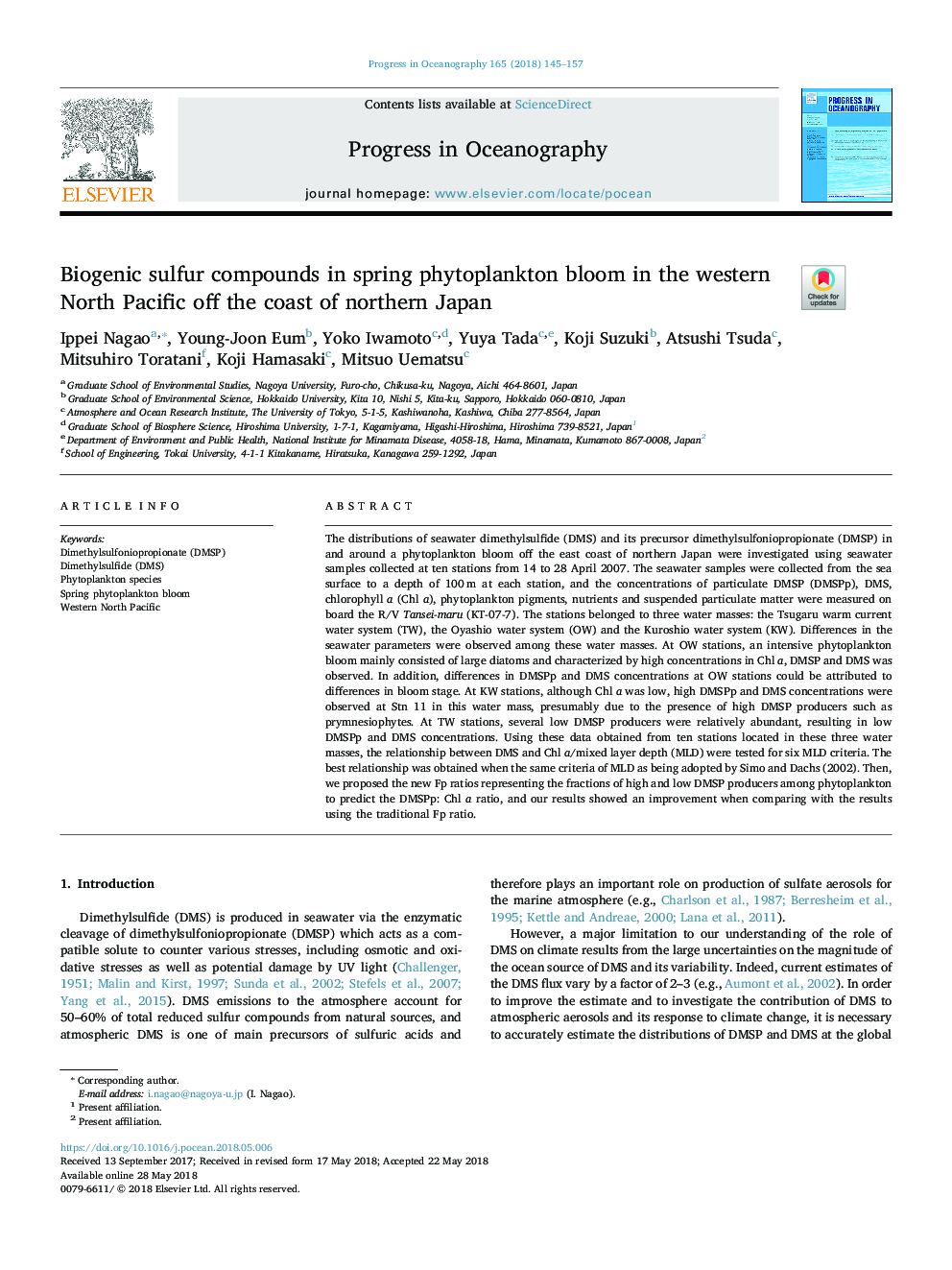| کد مقاله | کد نشریه | سال انتشار | مقاله انگلیسی | نسخه تمام متن |
|---|---|---|---|---|
| 8886622 | 1627893 | 2018 | 13 صفحه PDF | دانلود رایگان |
عنوان انگلیسی مقاله ISI
Biogenic sulfur compounds in spring phytoplankton bloom in the western North Pacific off the coast of northern Japan
ترجمه فارسی عنوان
ترکیبات گوگردی بیولوژیک در فیتوپلانکتون بهاره در غرب اقیانوس آرام در ساحل شمال ژاپن شکوفا می
دانلود مقاله + سفارش ترجمه
دانلود مقاله ISI انگلیسی
رایگان برای ایرانیان
کلمات کلیدی
موضوعات مرتبط
مهندسی و علوم پایه
علوم زمین و سیارات
زمین شناسی
چکیده انگلیسی
The distributions of seawater dimethylsulfide (DMS) and its precursor dimethylsulfoniopropionate (DMSP) in and around a phytoplankton bloom off the east coast of northern Japan were investigated using seawater samples collected at ten stations from 14 to 28 April 2007. The seawater samples were collected from the sea surface to a depth of 100â¯m at each station, and the concentrations of particulate DMSP (DMSPp), DMS, chlorophyll a (Chl a), phytoplankton pigments, nutrients and suspended particulate matter were measured on board the R/V Tansei-maru (KT-07-7). The stations belonged to three water masses: the Tsugaru warm current water system (TW), the Oyashio water system (OW) and the Kuroshio water system (KW). Differences in the seawater parameters were observed among these water masses. At OW stations, an intensive phytoplankton bloom mainly consisted of large diatoms and characterized by high concentrations in Chl a, DMSP and DMS was observed. In addition, differences in DMSPp and DMS concentrations at OW stations could be attributed to differences in bloom stage. At KW stations, although Chl a was low, high DMSPp and DMS concentrations were observed at Stn 11 in this water mass, presumably due to the presence of high DMSP producers such as prymnesiophytes. At TW stations, several low DMSP producers were relatively abundant, resulting in low DMSPp and DMS concentrations. Using these data obtained from ten stations located in these three water masses, the relationship between DMS and Chl a/mixed layer depth (MLD) were tested for six MLD criteria. The best relationship was obtained when the same criteria of MLD as being adopted by Simo and Dachs (2002). Then, we proposed the new Fp ratios representing the fractions of high and low DMSP producers among phytoplankton to predict the DMSPp: Chl a ratio, and our results showed an improvement when comparing with the results using the traditional Fp ratio.
ناشر
Database: Elsevier - ScienceDirect (ساینس دایرکت)
Journal: Progress in Oceanography - Volume 165, JulyâAugust 2018, Pages 145-157
Journal: Progress in Oceanography - Volume 165, JulyâAugust 2018, Pages 145-157
نویسندگان
Ippei Nagao, Young-Joon Eum, Yoko Iwamoto, Yuya Tada, Koji Suzuki, Atsushi Tsuda, Mitsuhiro Toratani, Koji Hamasaki, Mitsuo Uematsu,
